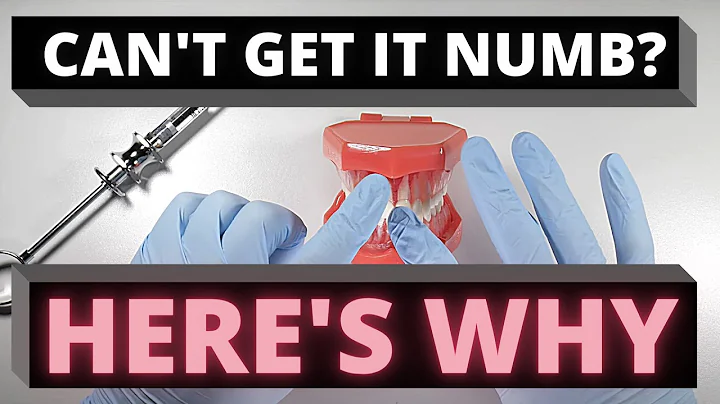Step-by-Step Guide: Installing an ASKO Dishwasher
Table of Contents:
Introduction
Installing a dishwasher can be a daunting task, but with the right tools and step-by-step instructions, it can be a manageable DIY project. In this guide, we will walk you through the process of unpacking, preparing, and installing a dishwasher in your kitchen. Whether you're a beginner or a seasoned DIY enthusiast, this guide will help you successfully install your new dishwasher and have it up and running in no time.
Tools Needed for Unpacking the Dishwasher
Before you begin the installation process, you'll need to gather some essential tools. Here are the tools you'll need for unpacking the dishwasher:
- Standard screwdriver
- 20 Torx screwdriver
- Philips screwdriver
- Adjustable wrench
- Wire cutters
- Razor knife
- Two-inch hole saw
- Tape measure
- Cordless drill
Unpacking the Dishwasher
Once you have all the necessary tools, it's time to unpack the dishwasher. Follow these steps:
- Use the razor knife to cut the straps that secure the dishwasher in its packaging.
- Cut an X on the top of the unit and on the back right edge to release the plastic.
- Remove the plastic carefully, as it may be tucked underneath the dishwasher.
- Remove the masonite wood from the top of the unit to reveal the toe kick and insulation.
- Set aside any packing material, including the using care packet and installation accessories.
Preparing the Dishwasher for Installation
Before installing the dishwasher, there are a few steps you need to take to prepare it. Here's what you should do:
- Remove any remaining packing material from inside the dishwasher.
- Take out the using care guide, warranty registration card, installation guide, and other included items.
- If your model is a panel-ready model, install the light shielding film included in the packet.
- Locate the easy install components attached to the back of the dishwasher, including the power cord and drain hose.
- Measure the height of the dishwasher and compare it to the opening to ensure a proper fit.
Adjusting the Height of the Dishwasher
If the dishwasher is too tall for the opening, you can adjust its height using the front legs. Follow these steps:
- Loosen the lock nuts on the two front legs of the dishwasher.
- Bring the legs down to the top of the feet and adjust them to the desired height.
- Use the standard extension for tips to adjust the rear leg, if necessary.
Connecting the Water and Drain Lines
Now that the dishwasher is prepared, it's time to connect the water and drain lines. Follow these steps:
- Locate the water valve and the drain connection in your kitchen.
- Determine if an air gap is required and connect the drain line accordingly.
- Attach the PEX hose water line to the 3/8 inch compression fitting under the sink.
- Check for any leaks and ensure proper connections.
Installing the Dishwasher
With the water and drain lines connected, it's time to install the dishwasher. Follow these steps:
- Choose the mounting brackets you want to use to secure the dishwasher to the cabinets.
- Carefully slide the dishwasher into place under the counter.
- Attach the screws to the cabinet through the holes in the brackets.
- Use rubber plugs to cover the screws and ensure a neat appearance.
Adjusting the Door and Balance
To ensure that the dishwasher door functions properly, it may require some adjustments. Here's what you should do:
- Open the dishwasher door and remove the upper basket.
- Adjust the door springs to achieve the desired tension.
- Test the door to ensure it stays in any position and doesn't fall open or slam shut.
- Make any necessary adjustments to balance the door using the white glide feet.
Securing the Dishwasher
To prevent the dishwasher from moving during operation, you need to secure it properly. Follow these steps:
- Lift a corner of the dishwasher and place the white glide feet under the leveling legs.
- Adjust the front feet as necessary to ensure the dishwasher is level.
- Attach any extra insulation supplied to the back of the toe kick to reduce noise.
- Align the toe kick bracket with the cabinets and slide the toe kick over the brackets.
Final Steps and Testing
With the dishwasher properly installed and secured, it's time to perform some final steps and tests. Here's what you need to do:
- Check the dishwasher for correct operation by turning on the power and testing the buttons.
- Start a rinse and hold program to test water intake, draining, and leaks.
- If needed, make further adjustments to ensure the door balance and overall functionality.
- Peel off any remaining protective film on the edges of the door.
- Enjoy your newly installed dishwasher and its convenient features.
FAQ
Q: Can I install a dishwasher myself?
A: Yes, installing a dishwasher can be a DIY project with the right tools and instructions. However, if you're not comfortable working with electrical or plumbing connections, it's recommended to hire a professional.
Q: How long does it take to install a dishwasher?
A: The installation time can vary depending on the complexity of the installation and your experience level. On average, it may take a few hours to complete the installation process.
Q: Can any dishwasher fit in my kitchen cabinet space?
A: Not all dishwashers are built the same, and their dimensions can vary. Before purchasing a dishwasher, measure the available space in your kitchen cabinet and ensure that the dishwasher you choose will fit properly.
Q: Do I need any special tools to install a dishwasher?
A: While basic tools like a screwdriver, wrench, and drill are needed, some dishwasher models may require specific tools for certain installation steps. Always refer to the manufacturer's instructions for the recommended tools.
Q: How often should I clean my dishwasher?
A: It's recommended to clean your dishwasher at least once a month to remove any food particles, residue, and mineral buildup. Regular cleaning helps maintain its performance and prolong its lifespan.
Q: What should I do if I encounter any problems during installation?
A: If you run into any issues or have questions during the installation process, refer to the installation guide provided with the dishwasher or contact the manufacturer's customer support for assistance.
Please note that the information provided in this article is intended as a general guide and may not apply to all dishwasher models. Always refer to the specific instructions provided by the manufacturer for your dishwasher model.
Resources:







